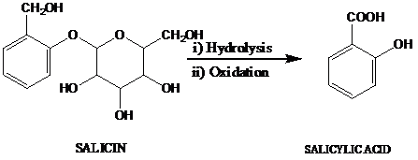The First ACE inhibitor: Captopril
Captopril
The first ACE inhibitor!
Captopril (trade name Capoten),
discovered in 1975 was Squibb’s first billion dollar drug and among the first
drugs marketed as anti-hypertensive agents.
Discovery of captopril makes an
interesting case of how a keen observation combined with systematic, rational
drug design approach can lead us to some path breaking discoveries. A snake
bite results in an instant drop of its prey’s blood pressure making its escape
impossible! This fact was the initial lead for the discovery of captopril.
Let’s read on an interesting account of
sequence of events and the thought process that went behind the success of
captopril.
The story begins in late 1960s when Sérgio Henrique Ferreira of
Brazil, who had been studying the venom of a Brazilian pit viper, the jararaca
(Bothrops jararaca), brings a sample of the viper's venom to John R. Vane, the Professor of Experimental Pharmacology in
the Institute of Basic Medical Sciences at the Royal College of Surgeons
England. Ferreira had successfully isolated bradykinin potentiaing factor (BPF)
from the snake venom. Vane was actively engaged in studying the cause of
hypertension and was also a consultant to E. R. Squibb and Sons in New
Brunswick. Ferreira had established that BPF potentiated the
actions of bradykinin, probably by inhibiting the enzyme that inactivated it.
At Vane’s request, BPF was tested on angiotensin converting enzyme (ACE) and
found to be a potent inhibitor thereof. This led to Vane’s strong interest in
ACE and its inhibition as a means of treating hypertension.
Ferreira and his colleague Greene
isolated and characterized the first peptide, a bradykinin-potentiating
pentapeptide that they called BPP5. This peptide also inhibited ACE and
transiently lowered blood pressure in animal models.
Something about the ACE first. ACE is
the abbreviation for angiotensin converting enzyme. ACE carries out conversion
of Angiotensin I, a decapeptide to an octapeptide, angiotensin II.
Angiotensin I Angiotensin II
Glu-Lys-Phe-Ala-Pro
(BPP5a)
This means
that if ACE is inhibited, angiotensin II, an important component of RAAS would
become unavailable and thus is unable to raise the blood pressure.
Coming back
to BPF, once it was determined that the peptides isolated from it were able to
decrease the blood pressure by blocking the ACE enzyme, a detailed study of the
enzyme and the mechanism behind its inhibition began.
The pentapeptide BPP5a, isolated by
Ferreira because of its susceptibility to enzymatic degradation, displayed an
effect that was very short lived in hypertensive animal models. However, another
longer peptide, a nonapeptide isolated by David W. Cushman was found to be very
stable. Its name, teprotide, reflects
the four proline residues that help to confer this stability. Teprotide was
shown to be an effective antihypertensive drug, albeit one with limited use
because of its expense and lack of oral activity. Many other peptides were
synthesized and studied on in-vitro
models.
Glu-Trp-Pro-Arg-Pro-Gln-Ile-Pro-Pro
(Teprotide)
Structure-activity studies with
analogues of teprotide and BPP5a helped to refine a hypothetical model of the
active site of ACE, a zinc metallopeptidase. The terminal sequence Trp-Ala-Pro
of BPP5a, or the related but more stable sequence Phe-Ala-Pro, was found to be
optimal for binding to the active site of ACE. However, being a peptide it
lacked oral bioavailability and thus not a very suitable therapeutic candidate.
For this reason Squibb was about to drop
the project. However, a couple of directors of the firm showed faith in the
project and thus the hunt for ACE inhibitors continued.
Thousands of molecules were synthesized
and tested for ACE inhibition but without success. A paper published on
inhibition of an enzyme, carboxypeptidase A by L-benzylsuccinic acid provided
the drug discovery team a sort of lead. Carboxypeptidase A is also a zinc
containing exopeptidase similar to ACE. Considering the SAR of BPP5a, teprotide
and other peptides showing inhibitory activity against ACE, the team in March
1973 decided to study the action of succinyl L-proline, an analogue of gly-pro.
Succinyl-L-proline displayed the
properties of a specific ACE inhibitor and was orally active. However, it had
very low potency to be considered as a drug candidate. This discovery stimulated
the synthesis of the D-2-methyl derivative of succinyl-L-proline, which proved
to be about 15 times more inhibitory than succinyl-L-proline, potent enough to
demonstrate its oral activity for inhibition of the hypertensive actions of
angiotensin I or augmentation of the hypotensive actions of bradykynin.
|
|
|
|
|
Succinyl proline (selective but low potency) |
D 2-Methyl succinyl proline (improved oral bioavailability) |
Captopril (introduction
of –SH increases potency due to better interaction with active site) |
In
a quest to enhance the interaction with the ACE active site, scientists tried
replacing the carboxyl group with many other groups out of which hydroxamate
and phosphonate groups were more effective than the succinyl carboxylate.
However, when the carboxylate was replaced by a simple sulfhydryl function, a
2,000-fold increase in inhibitory potency was achieved. This molecule was named
captopril. Captopril was introduced into the market in 1975, that is, aout a
decade passes since the tests with BPF on ACE inhibition.
A great number of analogues of captopril
were synthesized in various labs. A major class of specific ACE inhibitors
reported a few years later were tripeptide analogues. Out of these, enalpril and lisinopril by
Merck made it to the market in 1980, just five years after the discovery of
captopril. Both enalpril and lisinopril are prodrugs that lack sulfhydryl
group. Both are esters that are hydrolysed in the gut to give the active forms
of the drugs. All molecules discovered later are also prodrugs.
Presently, Indian market has the
following orally acting ACE inhibitors: captopril, enalpril, lisinopril,
ramipril, quinapril, perindopril, benazepril, imidapril, trandolapril,
cilazapril and fosinopril.





Comments
Post a Comment